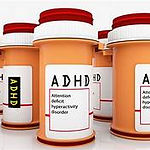

CURRENT TREATMENT OPTIONS
Daytrana Patch
ADHD Patch Medication. . .

There is one ADHD medication patch called the Daytrana patch. Daytrana is placed on the hip. The medicine is absorbed through the patch and the patch is changed daily.
Medications
Short and Long Acting . . .

There are a large number of medicines for ADHD. Some are short-acting, some long-acting but the majority of them use pills and are taken orally.
Side Effects
Drawbacks of current treatments. . .

The drawbacks to the ADHD medications are the side effects and the fact that they wear off. When you take a pill, it takes time to start working, then it peaks in effectiveness and slowly tapers off. The levels aren’t steady throughout the day so the symptoms of ADHD aren’t always controlled to the same degree. Additionally, ADHD medications take time to wear off so often you aren’t hungry at lunch or sleepy at bedtime.
The ADHD patch medication came on the market in 2006, but trans-dermal patches have been around much longer. While topical applications of medications and substances have been in use since the Babylonians, the first medicinal patch was invented in the early 20th century. Studies were initially done after several cases of poisoning in children who had touched toxic substances. It is widely accepted, that the skin, our body’s largest organ, is very capable of absorbing medications. A large number of medications are safely delivered trans-dermally and are found to be very effective at maintaining constant levels of medication in the blood.There are several medicines that come in patch forms. Some of the most well-known are nicotine patches. These patches work by allowing your body to absorb the medication through the skin. That is called trans-dermal absorption. Other common medicines that can be absorbed this way are pain medicines.
Picture Source: www.daytrana.com, www.healthline.com, amotherfarfromhome.com
FUTURE DEVELOPMENT

Currently, trans-dermal patches take time to get the medication in the body. There is a time lag. In the future, microneedles will be painless and allow for increased absorption rates of the medication. We will work with a materials engineer to develop a reusable patch and medication refills that can be inserted into the watch. The patch will use a small current to circulate the medication through the patch and into the body to maintain a constant blood level of medication.
We will need to work with Apple to develop a medical watch division. We anticipate that the medical watch could be used for multiple applications. It could be used to control diabetes, ADHD and chronic pain. People will want one device to meet all of their needs, and adding that medical functionality to a smart watch would ensure that they can.